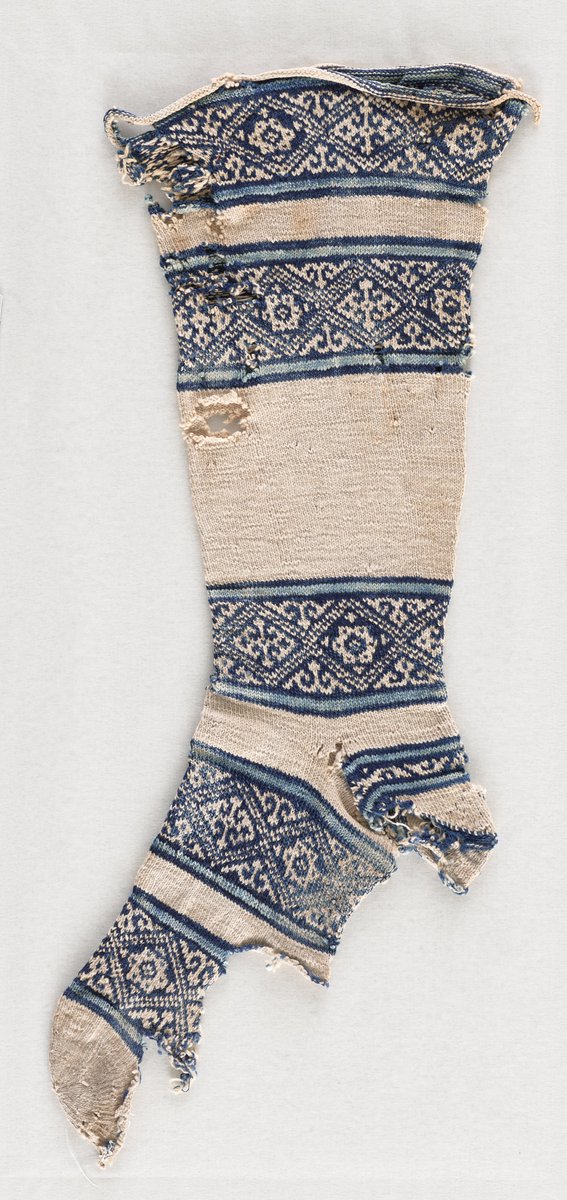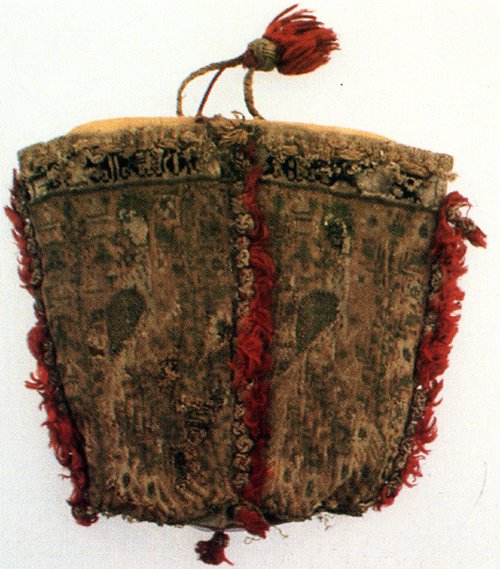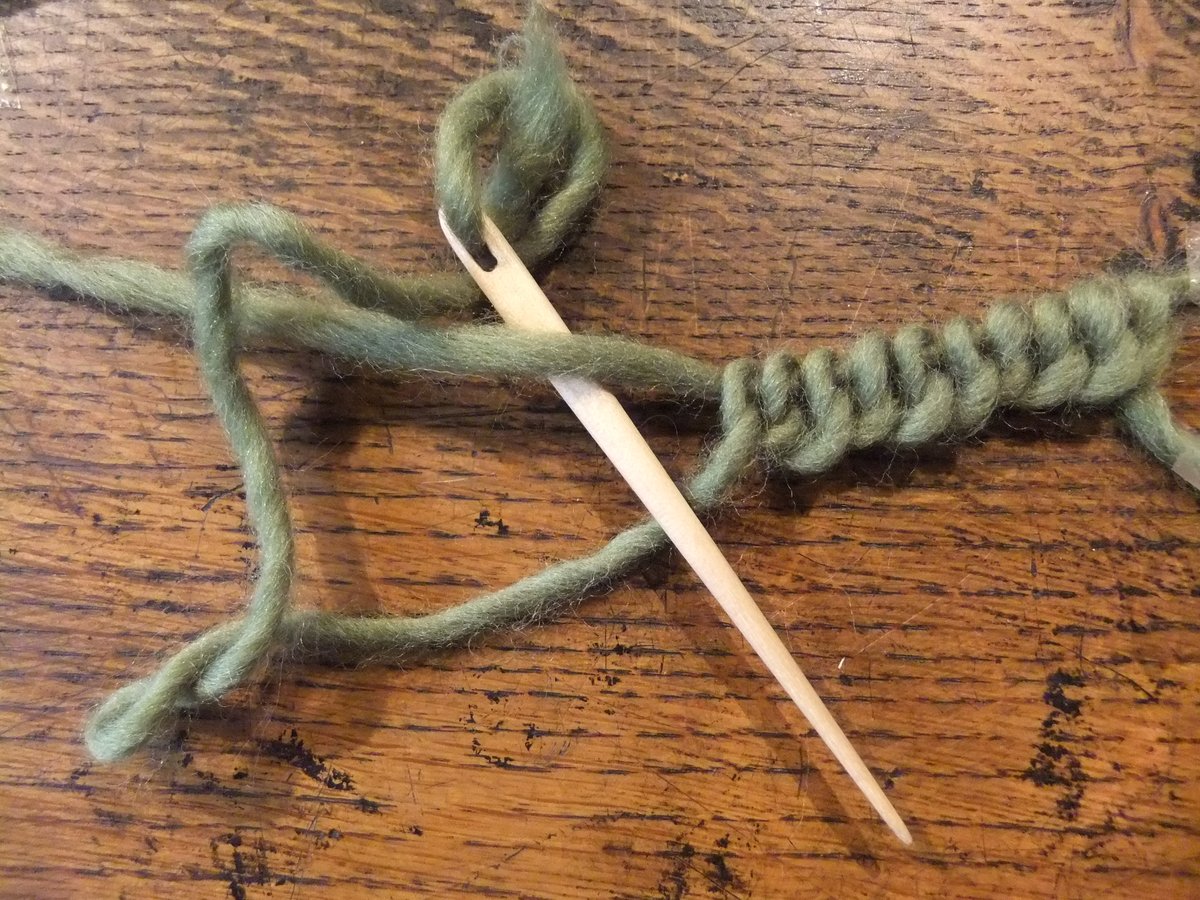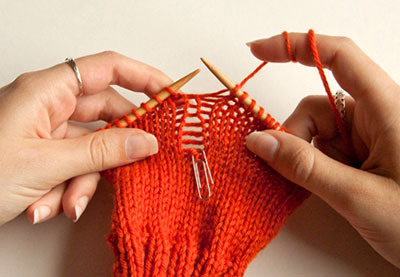
Suzanne F. Boswell@sf_boswell
Sep 22, 2022
14 tweets
Something that blows my mind is how RECENTLY knitting was invented.
Knitting is probably 1000 years old. Weaving, by contrast, dates back to the neolithic era. 

Although knitting is often associated with Northern Europe (Ireland, Latvia, the Scandanavian countries), knitting does not originate in Europe. Instead, the first handknit fragments appear in Northern Africa - in Egypt.
[Textile museum collection, "Sock," 1000-1200 AD]
We know these Egyptian socks not the “earliest” knitting, because they’re so complex. They involve multiple colors, and turning a heel (the use of short rows). Knitting had probably been around for a few hundred years.
[Textile museum collection, "Sock," 1000-1200 AD]
Knitting likely came to Europe through Muslim artisans working in Spain.
Case in point: the first European knit pieces were found in the tomb of Prince Fernando de la Cerdo (Spain, 1275) - silk pillowcases that include the Arabic word for "blessings" in stylized Kufic script.
In the 13th and 14th century, we start to see "Knitting Madonnas" in paintings from Spain, Germany, and Italy - an indication that knitting was becoming more widespread throughout Europe.
[Buxtehude Madonna, Bertram of Minden, late 1300s]
And then the 14th-16th century see an explosion of knitted objects (most of which were made with incredibly small thread). Liturgical gloves, purses, caps, trousers...
My favorite "Renaissance" knitted object are the Duke August of Saxony's silk trunkhose (1555) - with a knit codpiece, obviously.
Knitted objects in the Renaissance were mostly created by (all-male) knitting guilds, which were prominent throughout Western and Central Europe.
Here is a knitted masterwork - a carpet - created by an unknown knitter from Strasbourg, France (1781)
Some forms of knitting are even more recent - I discovered recently that *cables* (from cabled sweaters) were invented around the turn of the 20th century, in the Aran Islands in Ireland.
It's so fascinating to me that cables, which tend to denote old-fashioned knitting, or traditional knitting, are so young.
~100 years old. WILD.
(Seen here, iconically, on Chris Evans in Knives Out)
Anyway, this is some of the textile history I think about when I'm knitting extremely fancy dishcloths.
(I am basic in my knitting).
A lot of people are replying to this thread with "well, actually, there are knit socks that are 8000 years old."
But these objects are not knit! They're made by Nålebinding - a single-needle fiber craft that creates structurally different fabric.
[Pair of socks, V&A museum]
Archeologists sometimes mistook Nålebound objects for knitting, because they can look superficially alike.
But the two methods are very different (knots vs. loops, one needle vs. two). It's like comparing weaving to knitting. Very different fiber craft!
Textile historians sometimes had to follow the path of a single thread to figure out whether a particular object was knit or Nålebinding, because they can look so visually similar.
See also: twitter.com/Joi_the_Artist

Joi@Joi_the_Artist
Sep 23 22
View on Twitter
Fun fact: what predates modern knitting is nålbinding, a sort of single needle knitting. We have evidence for it at least 8k years back, and it's probably older.
It's weird and fun!

Suzanne F. Boswell
@sf_boswell
Gleefully overthinking everything. Researcher, quasi-academic, nerd, gym fan. I always flip to the end of the book.
She/ Her
Missing some tweets in this thread? Or failed to load images or videos? You can try to .

















